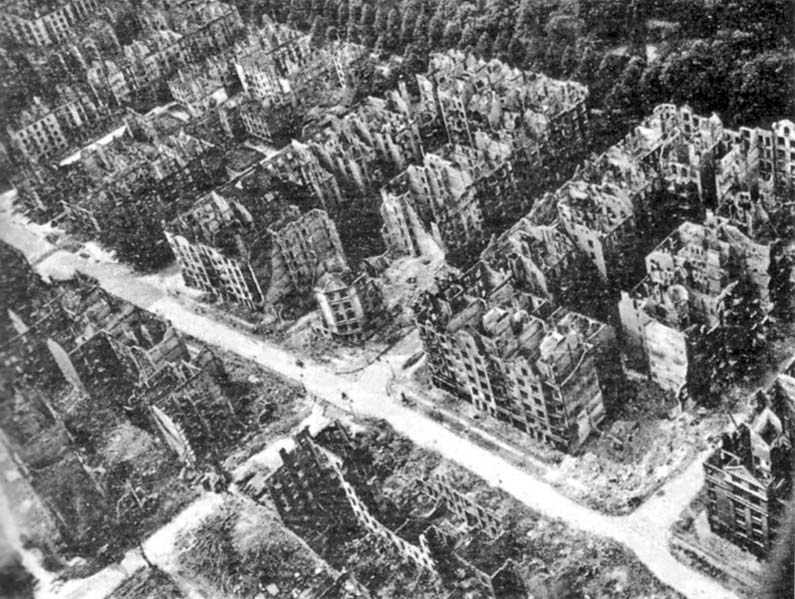The bombing of Hamburg in World War II (1943) was among the most devastating attacks on Germany during the war. Dubbed Operation Gomorrah, this was an 8-day, 7-night, U.S. and British all-out aerial assault on the German city that was intended to cripple Germany’s industrial strength. The amount of bombs dropped on the city was greater than any other previous air bombing in the history of warfare. In the aftermath, roughly 42,000 Germans were killed.
So severe was the bombing that Nazi official Joseph Goebbels believed that after the events in Hamburg, seeking peace with the Allies should have been the next course of action for Germany to take.
The Industrial Purpose of the City and Why Strategic Bombing was so Important
In order for a war to be waged, a military must draw from its industrial and energy base. Hamburg was a strategic target because it housed a great deal of industrial and energy resources. The city was also home to a large port that housed various ships and U-Boats. A nearby shipyard was used for boat construction and repair. There were also oil refineries in the region which helped fuel the Nazi machines of war as well as provide domestic power. Sales of gasoline also helped with the financing of the war. Also, near the city was the site of a very old and fully operational dynamite factory. Once the full strategic importance of Hamburg was understood, it becomes obvious why the United States and Great Britain would target Hamburg with such fury. Destroying Hamburg would seriously hamper Hitler’s war effort.
The Attack on the City
The British launched their air raids on the city during the evening while the American air force attacked it during the day. The British were able to obstruct German radar and launched their attack shortly after midnight on July 24, 1943. The weather was very clear that might allow the British to effectively hit their targets. The next day, the U.S. Air Force ran into number problems. 300 bombers were originally intended to hit Hamburg, but only 90 were actually able to reach the city. The bomber could not assembly properly so the force was scaled back.
Numerous blockbuster bombs were dropped on the city causing massive infrastructure devastation. This contributed to making it extremely difficult for German emergency services to address fires that were burning out of control in the city.
The City of Hamburg Erupts in Flames
Among the greatest devastation unleashed curing the bombing of Hamburg in World War II was the result of raging, out of control fires. While the bombing of the city certainly started many of the fires on the ground, there were weather conditions that greatly contributed to the raging of the fires.
The Hamburg area had been suffering from a mini-drought for an extended period of time. This lead to much of the surrounding area becoming very dry. Once the bombing started, homes and timber caught ablaze very, very quickly. To complicate matters even further, a mix of warm weather and concentrated force from the bombing created a literal tornado of swirling hot air that spread the fire rapidly. The heat of the tornado reached 1,500 °F causing the asphalt streets to literally burst into flames.
Fires in nearby Hannover had drawn away a number of firefighters making it difficult to contain the fires. There were about 40,000 firemen in the Hamburg area, but even such a significant amount of personnel was not able to get the fires under control. Recalling crews from Hannover did not help much and also resulted in Hannover fires burning out of control. The ability to reach areas where the fires were raging was made difficult to all the damage caused by blockbuster bombs. It was simply impossible to stop the city from burning and the fires raged for several days. The total human toll as a result of the fires and the bombings was 42,600 casualties.
The Aftermath of the Bombing
Nearly 200 major factories were destroyed in the bombing along with roughly 4,000 smaller ones. Hamburg would be bombed another 69 times before the end of the war, but it was the initial attacks on the city in 1943 that truly damaged much of Germany’s industrial strength. This contributed greatly to changing the tide of the war.
